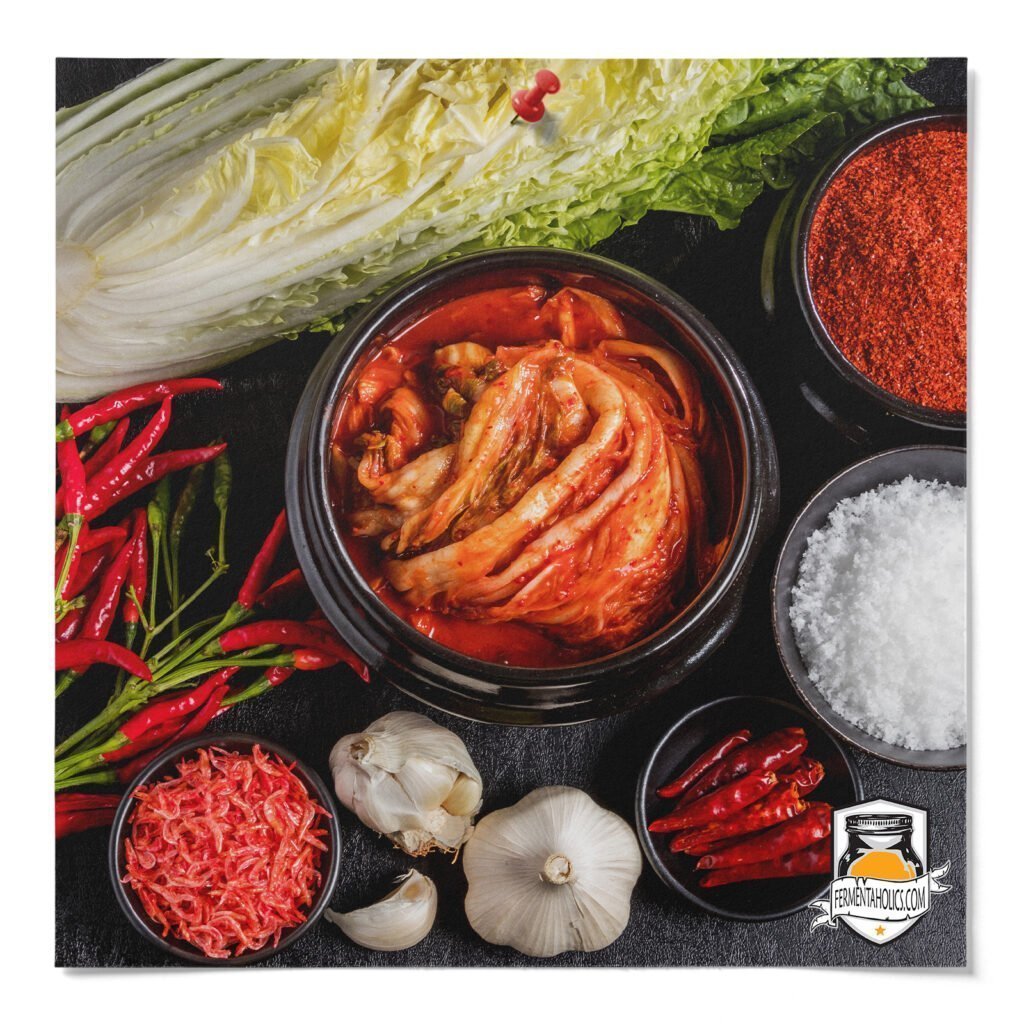
Kimchi is a traditional Korean dish that dates back to over 3,000 years ago. It is a fermented dish that is usually comprised of cabbage, radish, garlic, salt, and a plethora of other ingredients we’ll dive into later in this post. Ancient Koreans once used a variation of this recipe to enjoy the taste and nutrients of vegetables all winter long. Today there are hundreds of adaptations of this classic dish ranging from Korean cuisine to Mexican, American, and beyond.
Fermented foods like Kimchi are full of health benefits and probiotics. As Kimchi has gained global recognition, we have found that it is a great source of probiotics such as lactic acid bacteria which are linked with many health benefits. Harvard even noted that fermented foods have been linked to improved heart health as well as better digestion. In addition to these benefits, Kimchi is also a low calorie option to add into your diet, and this recipe will show you just how easy it is to make.
Fermentation is the process by which bacteria and yeast consume sugars, digest them, and transform them into byproducts such as alcohol, organic acids, and gases. Although there are many different forms of fermentation, the one taking place in this recipe is lacto-fermentation. Lacto- fermentation is performed by a group of bacteria called lactic acid bacteria (LAB). This produces lactic acid, which is most famous for cheesemaking due to its ability to process lactose, aka milk sugar.
The process of making fermented foods like hot sauce and pickles begins when the vegetables are submerged in salt water. One of the best ways to make sure your vegetables stay submerged is with glass fermentation anchor weights. LAB is already present on all plant matter, especially those that grow close to the ground, which makes the fermentation process easy for all vegetables. This process also creates enzymes and vitamins that make nutrients more bio-available in your body. Lacto-fermentation has been around as long as humans have been preserving food and is the reason we have classics in global cuisines like sauerkraut, kimchi, sourdough, and so much more! Be sure to check out our other fermented food guides, like our traditional sauerkraut recipe.
32 Oz Jar
15
Minutes3-14 Days
This Traditional Napa Cabbage Kimchi recipe is for one 32 oz jar. For a larger batch, scale this recipe by multiplying the ingredients or toggle the serving size above.
1 Head Napa Cabbage
1 Small Daikon Radish, Julienned
1 Bunch Scallions, Chopped
1 TBSP Salt
1/4 Pear, Julienned
1/2 in Knob Ginger, Grated
1 Shallot, Diced
4 Cloves Garlic, Minced
1 TSP Fish Sauce
1 TSP Cane Sugar
Filtered Water As Needed
1 Quart Mason Jar
Large Bowl
Food Processor
Remove the outer leaf from the cabbage and reserve it for later.
Chop the remaining cabbage into bite size pieces and place in a large bowl with the daikon radish, pear, and scallions, then sprinkle with the salt.
Using a tamper or your hands, work the salt into the cabbage. Set aside at room temperature for 30 mins to 1 hour during which time the salt will draw out moisture from the cabbage.
Meanwhile, make the paste – add the remaining ingredients into a food processor and blend into a paste. (If you don’t have a food processor, you can finely chop all ingredients for the paste).
Massage paste into the cabbage mixture until it is well incorporated, then pack into the jar, using a tamper to pack it in firmly and remove any air bubbles.
Take the reserved cabbage leaf and place it on top to act as a follower, then place the glass weight on top and press firmly until the weight is submerged by the brine. If there is not enough liquid to submerge, add filtered water to top it off.
Place lid with airlock on top and let ferment for 3-14 days, ideally around 75°F. The longer the fermentation, the tangier and more sour the flavor gets. Taste it along the way and when you are happy with the flavor, place it in the refrigerator to halt the fermentation.
